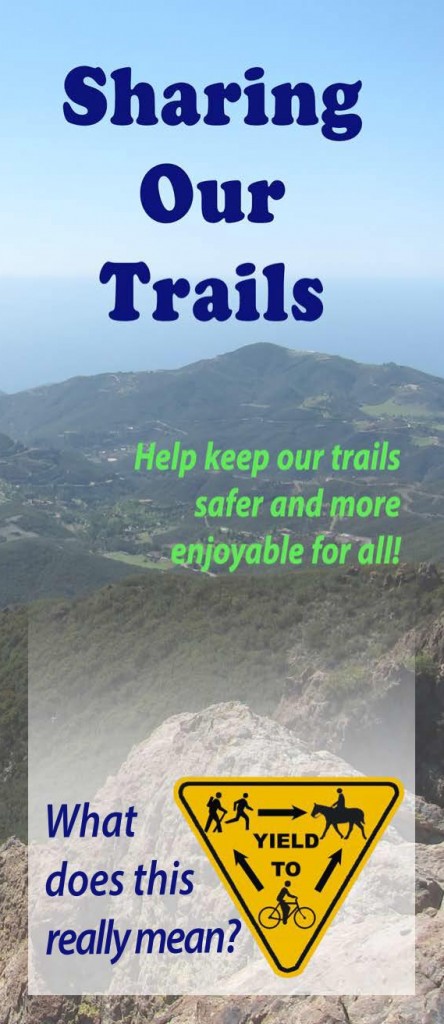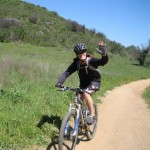During the past year, CORBA met with the Santa Monica Mountains Trails Council and State Parks representatives with the goal of improving safety on the trails of the Santa Monica Mountains. CORBA and the Trails Council both recognize the need for better education and outreach to the trail community. There has been a large increase in the numbers of visitors to the Santa Monica Mountains over the past decade. This increase in use has led to an increase in the potential for conflict and incidents on the trails.
 One of the biggest factors in safety on trails is the speed differential between mountain bikes–especially going downhill–and other trail users. It’s the reason there’s a 15mph speed limit on all trails and fire roads in the Santa Monica Mountains National Recreation Area. There has been a commitment to increase enforcement of these rules by State Parks and the NPS, but we believe that education is vital to reducing incidents or accidents on trails.
One of the biggest factors in safety on trails is the speed differential between mountain bikes–especially going downhill–and other trail users. It’s the reason there’s a 15mph speed limit on all trails and fire roads in the Santa Monica Mountains National Recreation Area. There has been a commitment to increase enforcement of these rules by State Parks and the NPS, but we believe that education is vital to reducing incidents or accidents on trails.
The outcome of those meetings was the development of a new Trail Etiquette brochure (pictured to the right). The brochure is being widely distributed in the area. We hope to educate all trail users on trail etiquette best practices. As a CORBA supporter you already know to slow down, yield to other trail users and be courteous. But many hikers don’t know that bikes are supposed to yield, many cyclists don’t know what to do when they come across equestrian trail users. The brochure attempts to explain what it means, in the most practical sense, to yield the trail. It also explains the responsibilities of all trail users in clear and simple terms.
As we developed the brochure it became clear that this information needs to be more widely distributed. It’s applicable to all non-motorized trails and trail users anywhere. CORBA applied for a grant from the California Trails and Greenways Foundation to put trail etiquette information on the web. We’re excited to announce that the grant was approved earlier in December, and we’ve begun working on a new web site entirely devoted to trail etiquette. Look for an announcement in the coming months when we launch the new web site.




